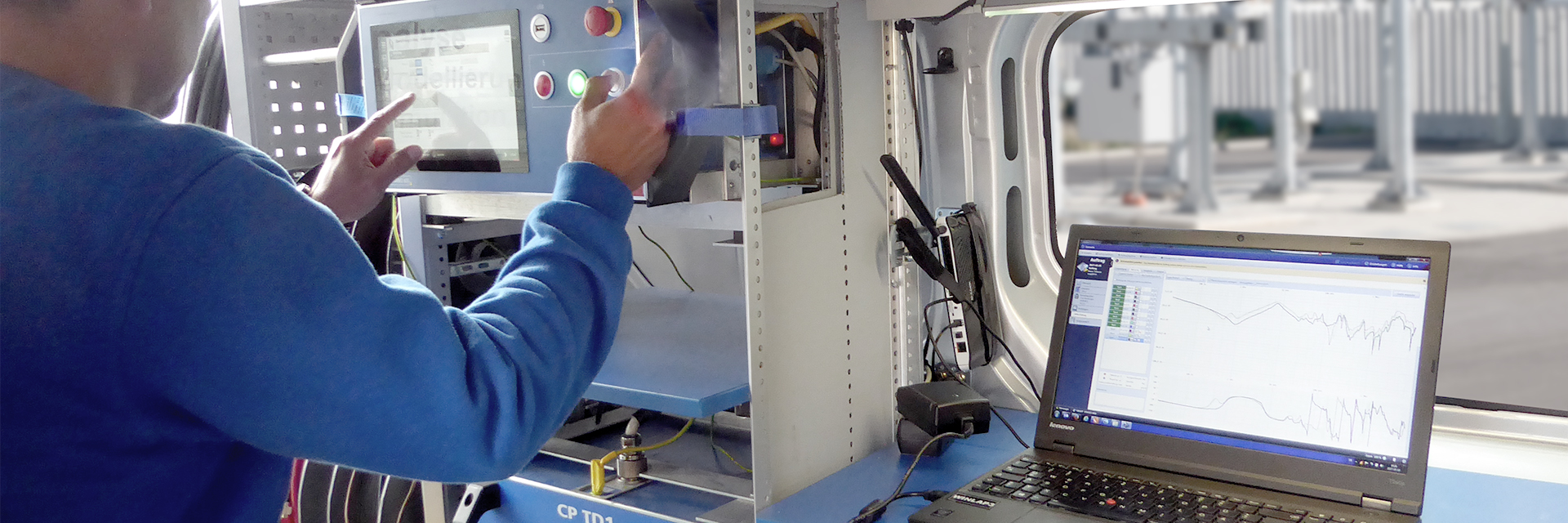Execution and evaluation of various electrical measurements on instrument transformers and sensors.
Various sources of error can cause transducers and sensors to fail. For example, development errors could occur with regard to the transmission ratio, the magnetic core or the insulation. It could also happen that manufacturing faults (open circuits, short circuits or insulation faults) lead to failure.
Operation outside the specification (over/under load) as well as electrical influences (overvoltage, short-circuit currents) and ageing (humidity, leakage, etc.) are further factors that determine and influence the reliability of a transducer.
In order to be able to assess whether the technical condition of a transducer/sensor is deteriorating due to the above-mentioned influencing factors, electrical measurements are carried out.
The occasions for performing electrical measurements on transducers and sensors can be divided into four main categories:
- Commissioning test
- Periodic condition assessment
- Periodic verification of accuracy
- Fault analysis
| Commissioning test |
Commissioning tests are very often carried out on site by the manufacturer before the transducer/sensor is switched on for the first time. However, some customers carry out additional and manufacturer-independent commissioning tests as quality assurance. For a better evaluation and classification of a transducer/sensor, it is more than sensible to carry out a fingerprint measurement before the initial commissioning. On the basis of this, it is possible to interpret all subsequently determined measurement results much more effectively and accurately.
| Periodic condition assessment |
Periodic condition assessment tests are also carried out. However, usually only selected diagnostic tests (e.g. capacitance and dissipation factor measurements) are carried out as long as no faults occur.
| Periodic verification of accuracy |
For converters used for counting purposes, accurate measurement of current and voltage is very important. For this reason, the issue of accuracy is also a relevant reason for testing instrument transformers and sensors.
| Fault analysis |
Within the scope of a fault analysis, various electrical measurements are carried out to clarify and, if necessary, locate the fault.
The electrical measurements are divided into two groups:
1. basic measurements
The basic measurements are classical measurement procedures that are used for a first good assessment of the condition of a transformer.
The following measurements belong to the basic measurements:
- Accuracy of the transducer ratio and the error angle
- Polarity
- Magnetisation characteristic
- Winding resistance
- Burden
- Capacitance and dissipation factor measurement
- Accuracy limit factor (ALF) and terminal voltage (Vb) of current transformers
- Measurement of residual magnetism of current transformers
- Transient current transformer parameters
2. advanced measurements
The advanced measurements include measurements that are used for in-depth clarification of possible anomalies. These measurements are particularly necessary if you want to reliably determine the ageing condition of the transformer. If there is a suspicion of a fault (fault analysis), the advanced measurements should also be carried out.
- Partial discharge measurement
- Dielectric response
- Frequency response measurement
